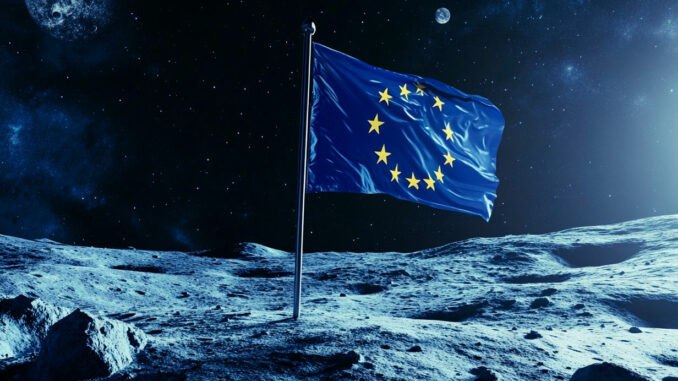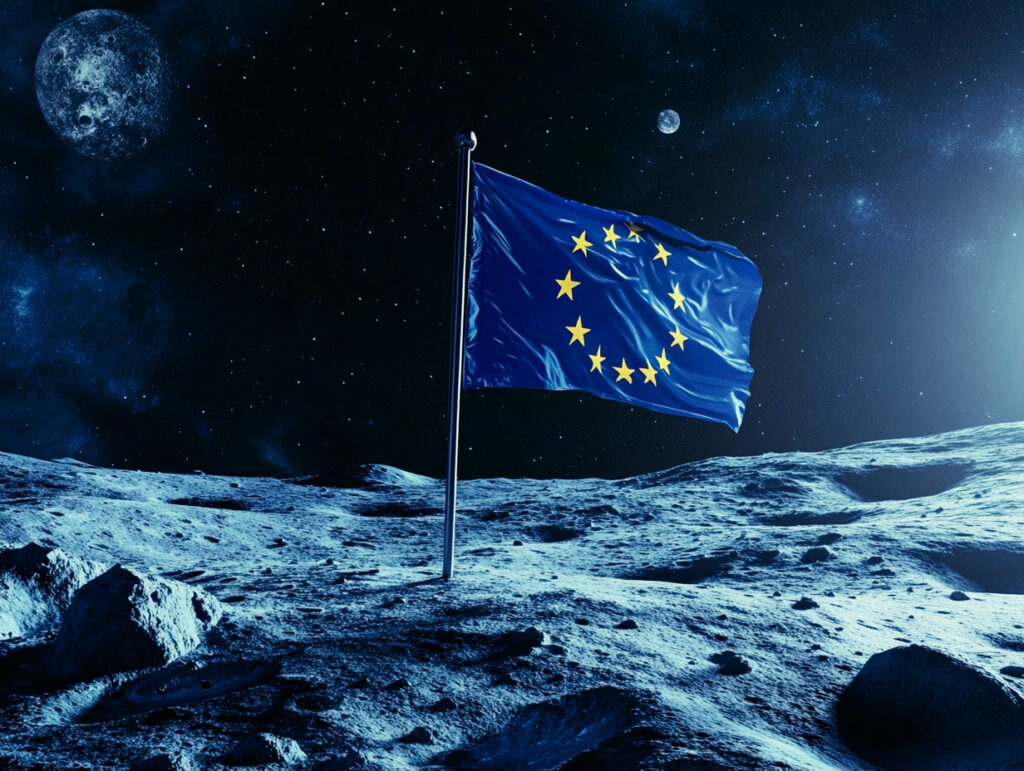
ESA’s “Explore 2040” program aims for a European presence on the Moon and Mars, with innovative space missions and support from its member states.
The European Space Agency (ESA) is implementing the “Explore 2040” program, a strategy to establish a sustainable presence in Earth orbit, on the Moon, and, in the longer term, to reach Mars. With the support of its 22 member states, ESA is developing innovative projects such as Argonaut for lunar landings, Moonlight for navigation services around the Moon, and LightShip for Mars missions. In 2025, the member states will have to define their commitments at the Ministerial Council, a crucial step towards realizing this ambitious vision.
A strategy towards a European presence in low-Earth orbit
ESA is working to secure a post-International Space Station (ISS) infrastructure in Low Earth Orbit (LEO). As NASA gradually withdraws from the ISS, Europe needs to build an autonomous alternative to guarantee a human presence in LEO, vital for scientific experiments and preparations for more distant missions. ESA envisages a cargo program in LEO, capable of transporting equipment, and ultimately developing European human spaceflight missions. The mission is to demonstrate a “round-trip” capability for transporting equipment to LEO, complementing the American and Chinese systems already in use.
Space infrastructure costs in LEO are substantial, with estimates ranging from 500 million to 1 billion euros per year for the development and maintenance of these missions. The success of this stage will enable Europe to maintain its access to space and move forward to the lunar and Martian stages of the program.
Objective Moon: the Argonaut project and Europe’s lunar ambitions
To set foot on the Moon, ESA has launched the development of Argonaut, a lunar lander in collaboration with Airbus, capable of transporting up to 1.7 tonnes of equipment to the lunar surface. This logistics module would be able to drop off essential payloads for international missions, thus ensuring European autonomy on the Moon. Lunar-orbit logistics missions are strategic for ESA, as they lay the foundations for broader international collaboration, while reinforcing Europe’s ability to intervene in space.
At the same time, Europe continues to supply the European Service Module for NASA’s Orion capsule, already in service for orbital missions around the Moon. Progress on the Argonaut will contribute to ESA’s independence, reducing dependence on international partners for future lunar missions.

Mars on the horizon: the LightShip program and Mars preparations
ESA’s course for 2040 is also set for Mars, with the development of LightShip, a propulsive electric tug designed to transport astronauts and scientific loads to Mars. In addition to navigation and communications, LightShip will play an essential role in the exploration of the Red Planet, carrying equipment for research and infrastructure to support human missions.
The costs of a mission to Mars run into billions of euros, with estimates for the communications and navigation infrastructure around Mars alone reaching between 2 and 5 billion euros. Setting up these infrastructures by the 2030s will be crucial for manned missions. In addition, Europe will be participating in the Mars sample return mission with the Rosalind Franklin rover, thus completing interplanetary research.
Moonlight: communications infrastructure for sustainable lunar operations
ESA’s Moonlight initiative aims to establish a navigation and communication network around the Moon, essential for coordinating lunar missions and providing uninterrupted communication for astronauts. This network will reduce the complexity of direct communications and increase navigational accuracy, an asset for lunar logistics.
Private companies have already expressed interest, with market estimates reaching several hundred million euros a year for lunar communication services. These infrastructures will support scientific activities on the Moon, while facilitating the eventual installation of lunar bases, a goal shared by several space agencies around the world.
Member State support: a pillar of the Explore 2040 program
One of the keys to the success of “Explore 2040” is the unanimous support of ESA’s 22 member states, who will meet in 2025 to determine their financial commitment. This support is all the more crucial as ESA budgets are limited compared to those of American or Chinese space agencies. ESA relies heavily on contributions from its members to finance its projects and maintain its infrastructure.
If member states maintain their contributions at the current level, estimated at 7.2 billion euros for 2024, ESA will be able to initiate the crucial stages of the Explore 2040 strategy. However, significant budget increases will be needed to fully support Mars and lunar ambitions, requiring a sustainable financial commitment.
A competitive and autonomous Europe in space exploration
The “Explore 2040” program reflects Europe’s ambition to establish a sustainable and autonomous space presence. By developing infrastructures in Earth orbit, and implementing projects such as Argonaut, Moonlight and LightShip, ESA is aligning itself with the world’s major space powers. However, the success of this program depends on substantial funding, ongoing cooperation between member states and technological innovation.
ESA is at a decisive turning point, where the collective commitment of its members could determine Europe’s future in space exploration. The choices made at the forthcoming Ministerial Council will be crucial in realizing this ambitious vision and ensuring Europe’s place at the forefront of lunar and Martian exploration.
War Wings Daily is an independant magazine.